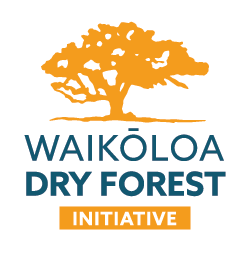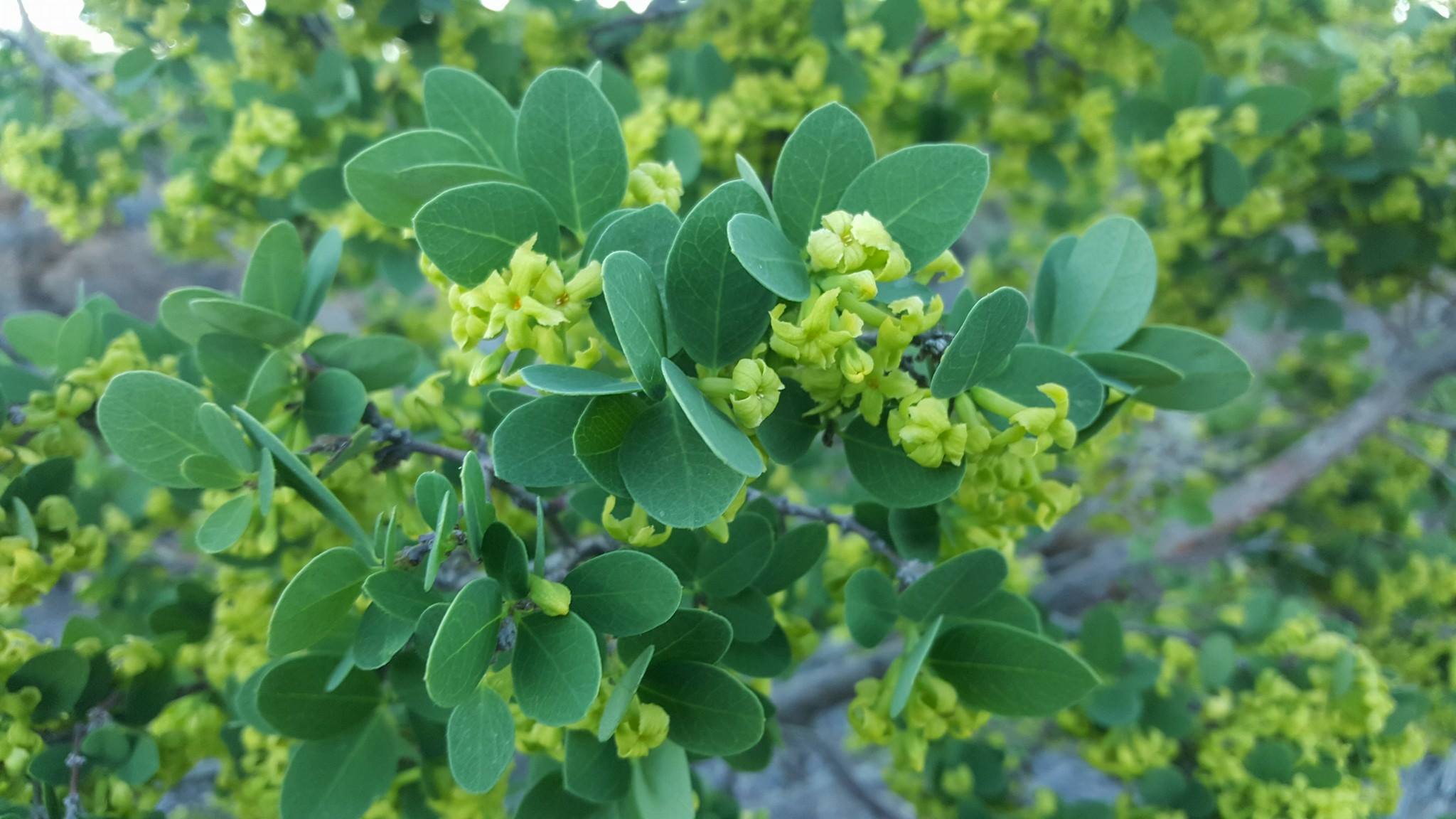‘Ākia is a beautiful shrub to small tree that exists in Hawaiian forests from sea level to 7,500 ft. elevation. Its dark green or gray-green leaves are arranged opposite one another and, depending on the species, can be small and ovate or large and narrow. With approximately a dozen different species of Wikstroemia native to Hawaiʻi, ‘ākia can be grown in a range of habitat types ranging from wet forests, to bogs, to coastal dry forests. Throughout the year, the tubular yellow flowers can be seen in clusters at the tips of the branches and will develop into large orange-red fruits which are dispersed by birds.
When grown in the landscape, ‘ākia makes for a great specimen plant, ground cover, or low-lying barrier hedge. Needing only minimal water, the deep green leaves of the ‘ākia will make your garden appear lush and vibrant without excessive water waste! The plants prefer well-draining soil but will thrive in many substrate types from cinder to ash.
Historically, the root and stem bark were used as an aquatic poison to stun fish in shallow waters or ponds. These fish were then caught and remained safe to eat because the toxin filtered through the fish quickly. Since the toxin merely stunned the fish, those that were impacted but not collected could swim away. ‘Ākia bark can also be stripped and used as cordage and the flashy red fruits were used in lei.
Resources:
- Lilleeng-Rosenberger, Kerin E. Growing Hawai’i’s native plants: a simple step-by-step approach for every species. Honolulu, Hawai’i: Mutual Pub., 2005.
- Wagner, Warren L., Derral R. Herbst, and S. H. Sohmer. Manual of the Flowering Plants of Hawaii. Honolulu, HI: University of Hawaii Press, 1999.


